

| year | size | head angle | seat angle | chainstay | bb height | tt length | wheelbase |
| 1984 | 21" | 72° | 72° | 17.5" | 24" | 42.8" | |
| 1986 | 21" | 70.5° | 70.5° | 17.25" | 11.75" | 24.5" | 42.25" |
Introduced around 1983.
The XCR Composite frame - an aluminum main triangle with a bolt-on steel rear triangle - was perhaps the most influential of the Mantis designs. Gary Fisher licensed a version in around 1989 (same year as the 1.25" headset...), the CR-7. Like the X-Frame/Valkyrie, later replaced by an elevated chainstay variant (see below). Originally, the XCR was a brazed full-chromoly frame (Columbus stays, top tube, and seat tube, and a down tube of plain-gauge aircraft tubing) much like the Sherpa, but built as one of the first dedicated racing mountain bikes, as opposed to the more laid-back geometry of earlier Mantis bikes.
MBA Jul 1986
| picture, serial # | description |
X21011 |
21" |
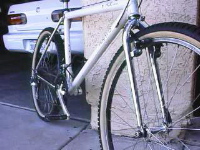 X19217 |
19" |
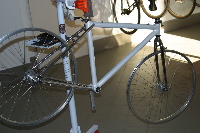 X18418 |
18"
1987 |
WILEY COYOTE |
1985
custom race frame for you-know-who |
| year | size | head angle | seat angle | chainstay | bb height | tt length | wheelbase |
| 1989 | 18" | 70.5° | 72° | 16.5" | 22.5" | 41" |
Introduced around 1989.
Basically a standard XCR with design modifications to accomodate the elevated chainstay design that Richard helped popularize in the early 90s. Nishiki produced a version of this frame, the Alien ACX, which had box section tubes in the main triangle. I beleive Haro also produced a frame of this type as well? Some full-aluminum XCRs were built as race prototypes, but only a very few, and they never made it into production.
| picture, serial # | description |
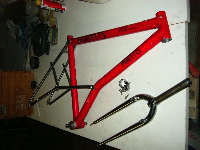 XCREC1 |
First XCR-EC made for the public, for the 1989? Interbike show |
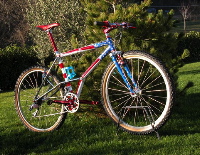 XCE19422 |
19"
~1989-91 original paint was Mantis blue |
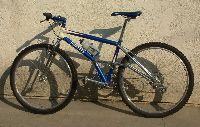 XCE13123 |
13" |
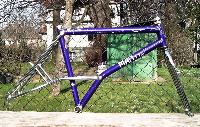 XCE20723 |
20" |
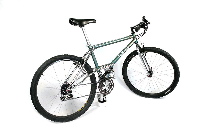 XCE18424 |
18"
~1993-94 |
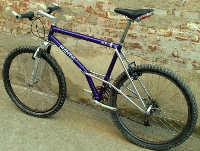 XCE20324 |
20"
~1993-94 |
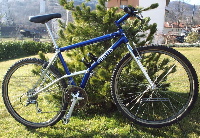 XCE18425 |
18"
~1993-94 |
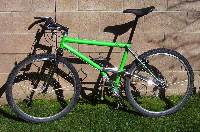 XCE18525 |
18"
~1993-94 |
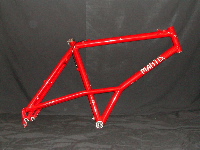 21 PROTO SON OF LORD OF SPHINCTER |
~1993
full AL prototype frame |